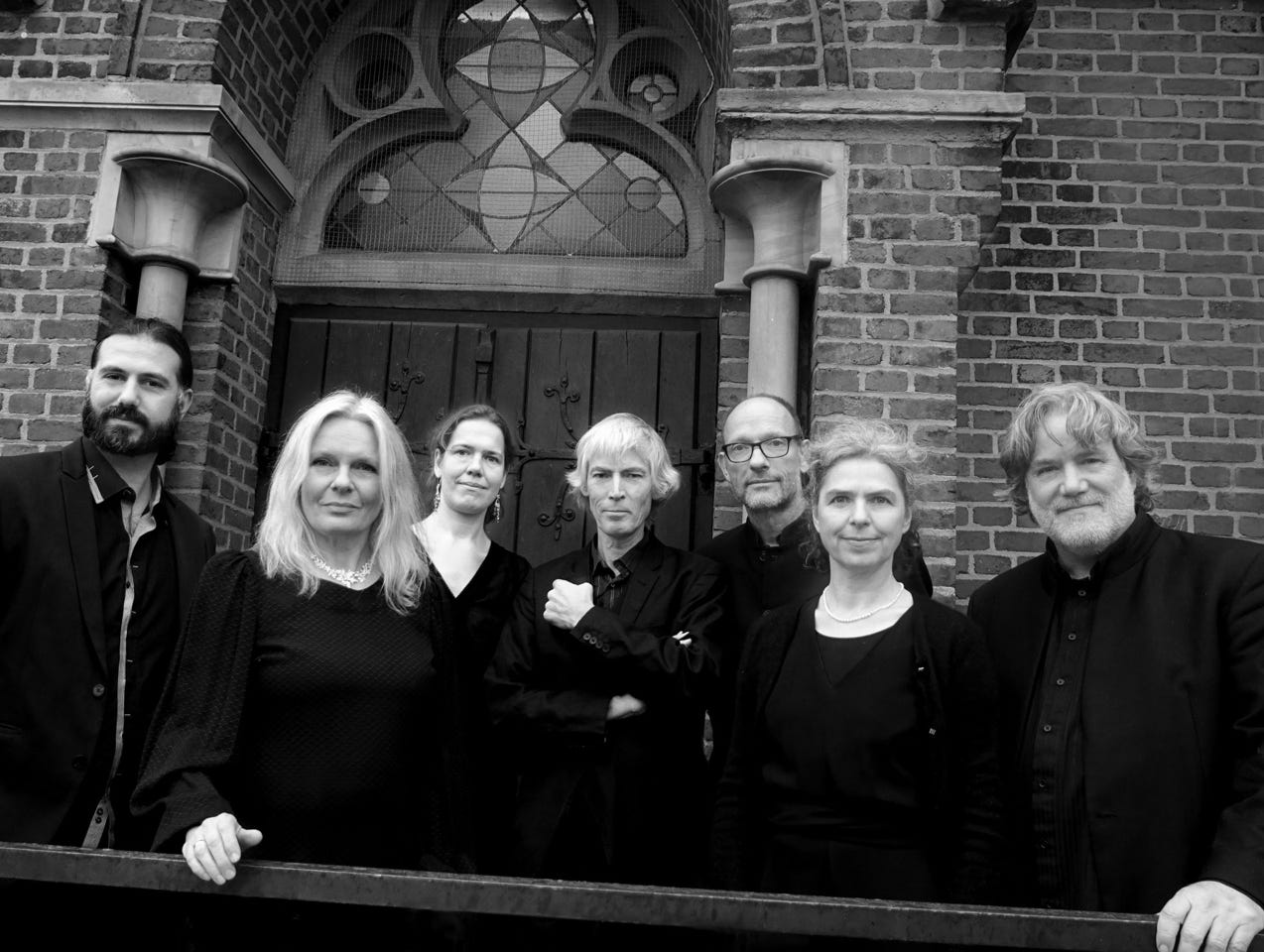CATALOG nemu 025
E

CANDENZ LILIUM:
Sabine Lutzenberger – voice
Philipp Lamprecht – voice, percussion Albrecht Maurer – fiddle, rebec
Norbert Rodenkirchen – medieval flutes, harp
LES HAULZ ET LES BAS:
Gesine Bänfer – shawm, bagpipes
Hanna Geisel – shawm
Ian Harrison – shawm, bagpipes
Artistic director
Norbert Rodenkirchen
Recorded and mastered: April & July 2021 at Topaz Studio Cologne by Reinhard Kobialka. Photos by Christoph Hillmann. Produced by Norbert Rodenkirchen.
℗ + © 2021. All rights reserved! Made in Germany.
The "Carmina Burana" are a manuscript of songs from around 1230 which contains European repertoire of the 12th and 13th century. The manuscript has been named in modern times after its discovery site, the Benediktbeuern monastery. Today it is part of the Munich State Library.
The Carmina Burana offer a repertoire that refers to the cathedral schools in various episcopal cities in Europe. Their graduates often found no employment and roamed the countryside as so-called goliards or vagantes. In keeping with the tradition of the vagantes, the collection contains texts that are both respectful and disrespectful of ecclesiastical and liturgical traditions. The songs are addressed to a more highly educated audience, which also understood satirical allusions to the genres of ancient poets and to images of Christian theology.
For decades, there have been various reconstruction approaches and methods to bring the songs of the original manuscript of the Carmina Burana, which were thought to be lost, back to sonorous life. At the beginning of the 20th century, the process of musicological reappraisal began. The most important method here is the search for concordances, i.e. identical pieces in other, partly later manuscripts, as well as the tracing of contrafacta, i.e. songs with a similar text structure and a corresponding melody that can also be used for a special poem in the Carmina Burana. Likewise, the inclusion of the lineless neume notation under a fifth of the Benediktbeuren texts is helpful for a wide variety of melody recovery procedures. There are also very promising mixed forms of reconstruction methods, especially when dealing with fragments that still require melodic completion. In this program we also use semi-improvisatory invention techniques based on knowledge of the verse schemes and the corresponding recitation formulas. Thus a coherent melodic shape can be developed - but it does not claim to represent the only possible reconstruction.
An example of this method is "O fortuna", which has survived only as a text. The verses agree metrically to a large extent with the spiritual hymn "Pange lingua" by the early medieval poet Venantius Fortunatus. The connection between the Fortunatus - hymn and the song from the Carmina Burana must have been obvious to the vagantes. So we present the song in the guise of this simple Gregorian hymn!
The program presents an assemblage of monophonic modal chants from the Carmina Burana accompanied by harp, fiddle and transverse flute. Contrast this with music for the loud-sounding Alta Capella additionally with percussion and bagpipes. Together, the two ensembles present polyphonic works closely related to the monophonic neumated versions of the original manuscript.
The Carmina Burana contain a variety of texts on different themes. We focus on the protest against the avarice of the clergy. Furthermore, springtime love poetry plays a role as a secondary theme in a series of extraordinary women's stanzas. In part, such texts were apparently misunderstood in the past; for example, Carl Orff fantasized that a "Queen of England" was lying in the arms of the longing singer - whereas in reality it was clearly the "King of England".
In the case of an anonymous goliard, the bilingual accusation "Audientes audiant, listen, the shame drives all over the land" is directly connected with the request for an appropriate remuneration of the minstrels: "You free-spirited clerics, notice how it is: 'Pray, and it will be given to you!' You should always leave the door open for us needy vagabonds, so you will gain a home in heaven and in eternal joy. But only so!" Another anonymous singer "cries aloud: the full belly is safe. [...] His church is the heavenly-smelling kitchen" - and this is sung to the famous tune of Walther von der Vogelweide's Palaestinalied. Here the greedy hunger of the vagabond and the stinginess of the giver are sarcastically interwoven: the "pure land" degenerates into a sinful land of milk and honey.
What particularly distinguishes Carmina Burana is a kaleidoscopic versatility of genres and a wonderfully imaginative intermingling of light and heavy repertoire, of the banal and the serious, of dance and contemplative songs, of loud and soft. Today one would say this collection covers a spectrum from serious music to light music. Protest song and youthful love poetry have obviously always been very close to each other.